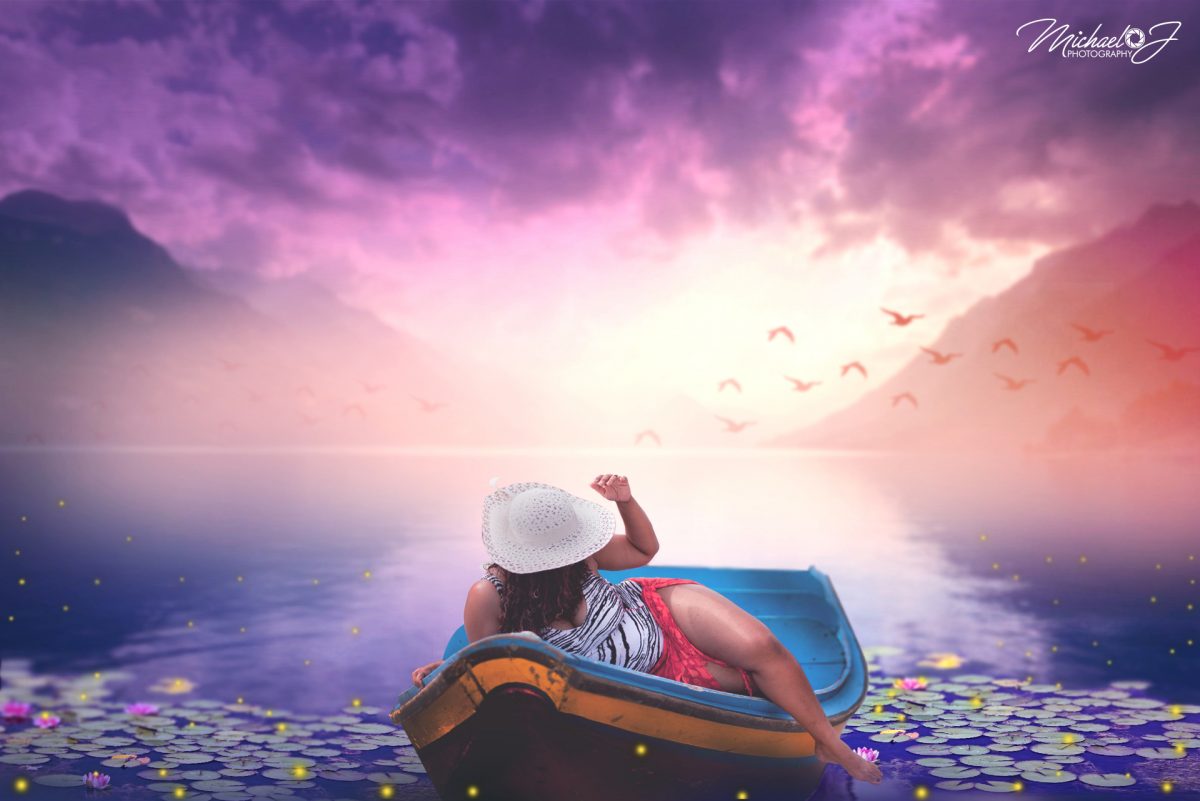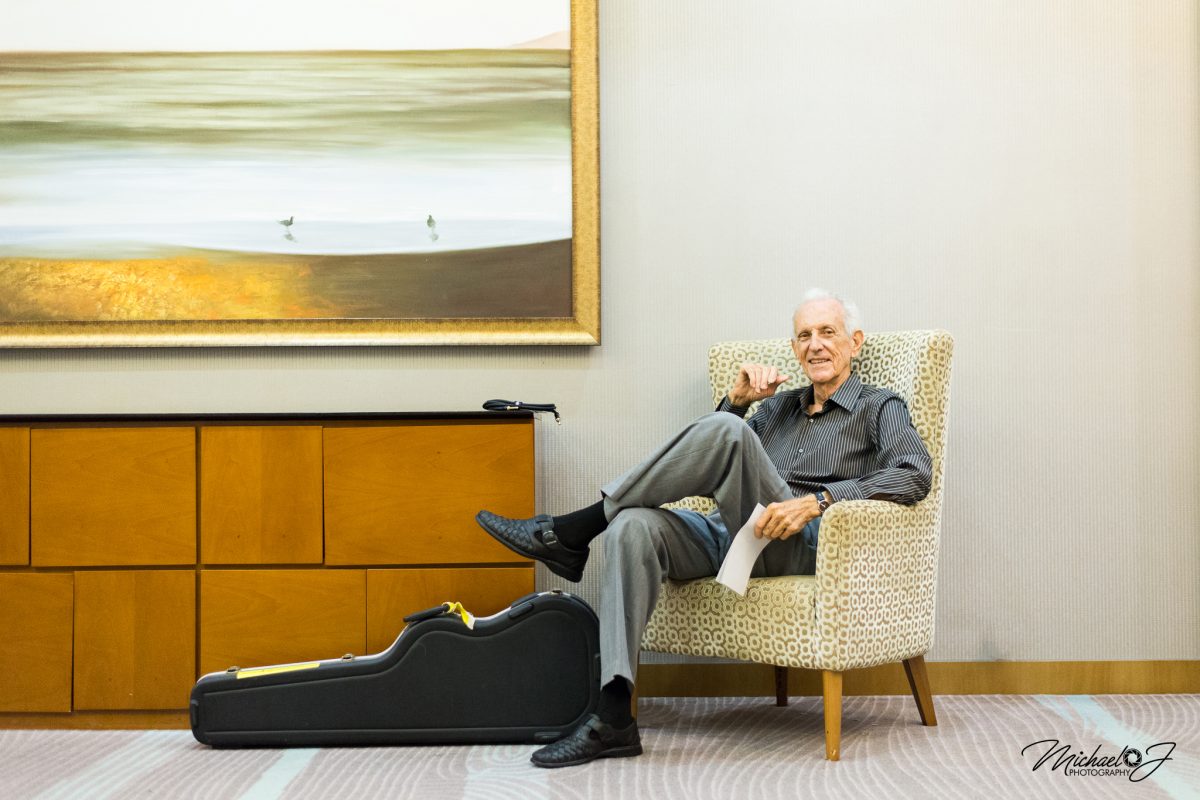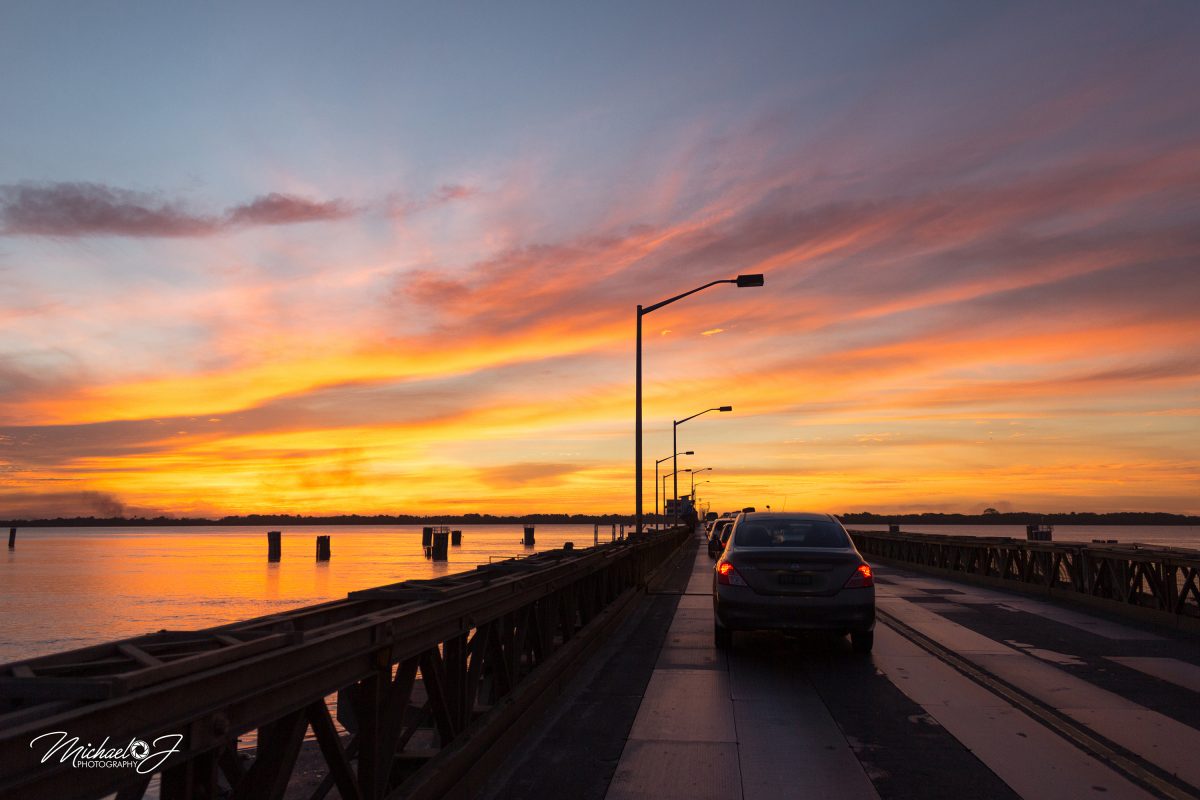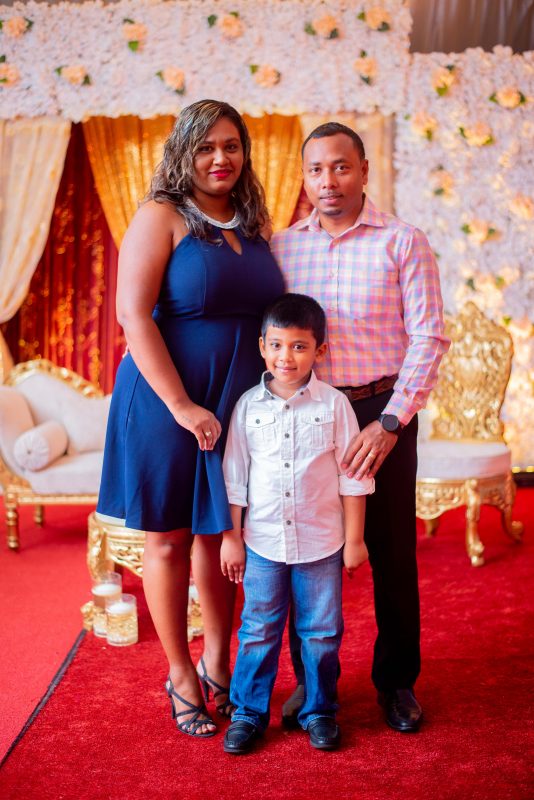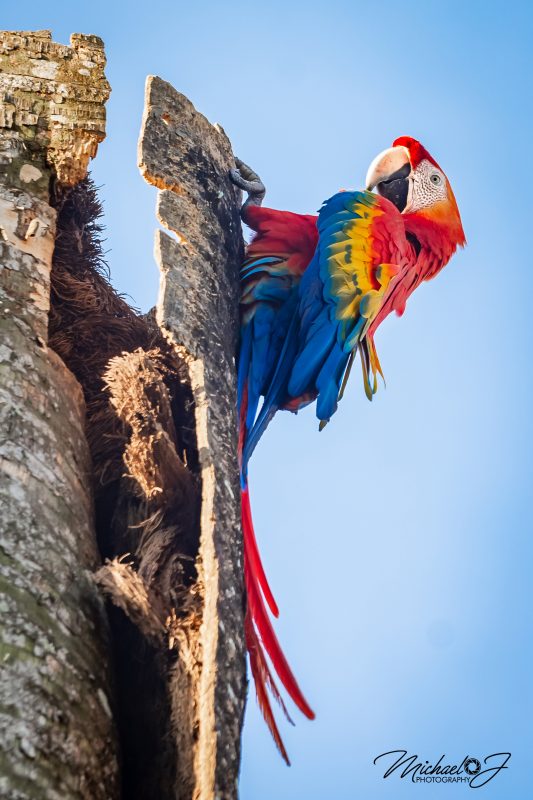Though singing is not his forte, Michael Jackson still leaves a lasting impression with his photography, his eye for detail making him much sought after.
Michael originally had the impression that photography was boring and whatever caused anyone to take a second glance was fake and altered, until 2012 when he stumbled on a black and white photo of the seawalls by one of Guyana’s photography legends, Michael C Lam on social media. Astounded by what he saw, his research and introduction to the photography world began.
Michael was born on October 28, 1985. At the time American pop star Michael Jackson was at the peak of his career and an uncle of the photographer who was a big fan of the ‘King of Pop’ thought his nephew should be named Michael as he already had Jackson as his surname. His life began in Wales, West Bank Demerara, but when he was just months old, his parents relocated along with him and an older brother (now deceased) to Tucville.
Michael explained that his family was really poor and though they settled in Tucville, their home was situated in a squatting area and built with wood reclaimed from a building that was demolished. He attended St Christopher’s Nursery and Tucville Primary before taking a transfer to St Andrew’s Primary. The death of his grandfather saw the family returning to live in Wales. By this time his sister had come along and she joined her two older brothers travelling to George-town every day for school. He moved along to East Ruimveldt Secondary School but was later transferred to Paten-tia Secondary School. His name earned him a hard time in secondary school, and when the star Michael Jackson faced sexual assault charges, things got even worse for him, but he learnt to ignore the taunts.
Although Michael got as far as fifth form, he did not write the Caribbean Secondary Education Certificate exams because he did not think he was prepared and also because he could not let his parents pay for subjects when they could barely afford it, so he dropped out of school.
When he left school, he immediately got a job as a porter at Hadi’s Bargain Store. He gravitated towards computers, graphics specifically and most of what he learnt was self-taught. When Michael went to Global Technology to write the exams to get a certificate for Graphic Designing, they told him he needed to do the training before they could allow him to do the exam and were surprised that he finished the entire syllabus in an hour. Impressed, Global Technology offered him a job on the spot, but at the time he was already working at Gafoors as a Graphic Designer and so he declined the offer.
Digital camera
At Gafoors, Michael was equipped with a digital camera. Some of his responsibilities included taking photographs of the company’s products then removing the background to isolate the images before placing them in various designs. That was the most knowledge he had about a camera and photography until coming across Lam’s seawall photo. This led Michael to research photography in Guyana and in doing so he found the Guyana Photographers Facebook page. The members of this group, he said, assisted him with whatever questions he had. With the company’s camera at hand, Michael began watching YouTube videos, reading articles on photography and signed on to Lynda.com, then tried what he saw with the camera. However, because the camera had no manual control there was only so much he could do.
In 2013, Gafoors bought a bridge camera and while he was able to try some new things, it was still limited as it did not have the functions of DSLP camera. Disappointed, Michael decided to purchase one of these cameras, but he did not have the finances. So, he approached Mr Gafoor and made the request, promising to pay back in monthly installments from his salary. Less than a month later, on April 25, 2014, Michael received his first professional camera. His photography journey began almost immediately. He believes that God had his hand in this all along and added that ever since he first held his camera his life completely changed, and he has seen incredible improvements since.
But he also made the point that it is not just about having expensive equipment as while that makes photography easier, it does not make one’s photos better; the art of photography is a skill that is learnt overtime.
“The love for photography had somehow consumed me without warning. Photography is my hobby more than a profession and my way of self-expression. I take pictures to express my interpretation of the world around me,” Michael said.
There came a time when the graphic designer realized that he needed to make a change in his job. After years of working directly with Mr Gafoor, Michael realized that he needed to call it quits. It was a hard decision to make, the artist said. For many years he had arrived at work at 7.30 am Monday to Saturday and left late at night only when Mr Gafoor himself decided to leave. But knowing what he needed to do to reach certain goals in life, he sadly typed out his resignation letter. He said he went through with it in tears, but the older man understood and wished him well. He recalled that at the beginning of his time there, Gafoor had nicknamed him Elvis because of his love for Elvis Presley; the name stuck, and Michael was referred to as Elvis by his colleagues over the years.
Michael then worked in graphics at Giftland for a short period, then at Caribbean Containers Inc, where he has been for the last four years. Since 2014, he has only done photography part-time and is one of the administrators for Guyana Photographers on Facebook.
Inspiration
All of his inspiration is from local photographers: Fidal Bassier, Nikhil Ramkarran, Amanda Richards, Saajid Husani and Michael Lam. “We have a range of photography styles in Guyana. Saajid has a certain style and to be honest a lot of young photographers gravitate towards it because they think by editing my images to look like Saajid’s I would get the same effect and viewership that he got but it’s nothing like that. Saajid understand composition, he understands photography and you can’t just take an image and colour-grade it and expect it to look good,” Michael enthused.
“As soon as you see Fidal’s photo you know that it belongs to him. Fidal has a certain finesse. Michael Lam and his black and white… Michael is a sky lover. He is a sky fanatic and I’ve gravitated towards that. I see how he executes his landscapes, how he uses the sky to tell a story and to add to the image and for my black and white landscapes I gravitate a lot towards that. Nikhil has his own style. Amanda, she does a lot of events and she has her own style as well. People would go after a certain style. They want this type of photography or they want that type. It’s a good thing that we have a variety of styles. I would encourage any photographer to try it, experiment, try to find yourself. Try my style, try Fidal’s style, try Nikhil’s, try Michael’s, try Amanda’s, try Saajid’s… You’ll eventually find that none of these styles actually suit you and you’ll begin to do something different and when you start doing that kind of different, that’s going to become your style. You’ll see that it doesn’t look like anybody else’s and immediately you’re going to start differentiating your photography from the others.
“Photography basically started as a hobby and I started posting photos on Facebook and people started seeing them and would reach out to me and ask me if I covered weddings and other events. At first, I didn’t know what to say because I didn’t want to take on a job and I had no idea of how to execute it. I did a lot of free work at first. I went around with a few photographers before I began taking on my own weddings. When you do weddings, you would often come across ‘the drunken uncle’ and the ‘talkative aunt’. The ‘talkative aunt’ would be like ‘tek this picture, tek that picture. Make sure you got this one and that one’. You as a photographer would know what you have to do but they are there. Then there’s the drunken uncle who has a bunch of friends and he constantly wants photos of him and his friends. I think you need to have a positive mindset and a still tongue because people will push you to the limit where you just want to pick up all your equipment and walk out but it’s not their event, you do this for the bride and the groom or the birthday individual or if it’s a corporate event, then for the company of whoever it is so you really need to know how to communicate with people.”
To date Michael has covered approximately 70 weddings and it did not take him very long into covering events to recognize what goes on at them. Prior to the wedding, Michael would have a sit down with the bride and groom to let them know what to expect. In addition, he would talk to them about just being themselves and enjoying their special day together. The photographer noted that there are times when the bridge might forget this and to make her relax, he would show her a candid photo of her looking beautiful.
Because of his dedication, he has covered events for many reputable companies such as Macorp, Gafoors, Caribbean Container Inc, Georgetown Public Hospital Corporation, the Ophthalmology Society of the West Indies and many others.
In this digital age, photography has moved from the days of film where persons paid for each photo that was washed; today they pay per hour. There have been persons, Michael shared, who approached him to take 10 to 15 photographs of their wedding but expected him to stay most of the day and could not understand why he wanted to be paid per hour when he was only taking a dozen photos. Photographers, he said, have come to value their time more. A client that pays by the hour receives all of the photographs snapped in the time they pay for.
“There is an excitement to seeing clients receive their photos. Their expressions are priceless. Brides are always excited and they can’t wait until I’m done editing which takes about two to three weeks so I would send them a link with some digitals and from the time they get the link they gone posting and even if they don’t tell you ‘thank you’ or ‘we love the photos’ the fact that they are posting it in such a rush it speaks volumes of how much they appreciate it. That excitement fuels me and drives me,” he said.
‘Dedication’
Having learnt so well the art of photography, Michael has taught his wife some skills and now she works along with him. The point and shoot camera has since been passed on to his five-year-old son who is always taking photos and has learnt some tricks from his father also.
Michael has exhibited his work at the National Gallery, which purchased one of his photos as it is considered a one-of-a-kind image. Because of a contract signed with the gallery, Michael cannot release that photograph anywhere else. The photo, ‘Dedication’, is of an old fisherman sitting on some nets and cleaning his fishing hooks. There were hundreds of hooks.
Another loved photo for Michael is of Tradewinds iconic band leader/singer Dave Martins. He had spotted the singer seated in a chair and asked to take his photo. It turned out that Dave and his family fell in love with the photo.
However, Michael enjoys taking landscapes. He is always amazed at a sunset or a sunrise which reminds him that God exists, and He is the better artist.
“I would love to see photographers in Guyana have their own art gallery. This would be amazing. Photography is a major contributing factor to tourism because without these photos of Rupununi, or Kaieteur, Orinduik Falls, the rodeo, Marriott, once a photo of it is uploaded, it exposes Guyana, people would come and would want to see those same areas. Art is a big thing for tourists and if we can maintain our stelling, they can come with their yachts and visit as they’d like. They understand art. A lot of tourists, they go for photography, they go for art, for craft. They want to see it, it’s something that fascinates them. They appreciate it in their country and whenever they go to another country, they look for it. In Guyana, we have barely scratched the surface of photography; we are evolving from the common photographer that carried around extra film rolls to the digital age where we walk with extra memory cards and portable storage devices. Within the next 10 years, I will have a fully blossomed photography business and 5 years after that I will retire from professional photography and keep it as my hobby,” he said.
Another thing to know about Michael is that when he was younger and danced with his members of his church, he had some moves like the “Billie Jean” singer.
His name posed a problem some months ago when he tried to fly to Trinidad to attend his older brother’s funeral. The computer refused to accept him as Michael Jackson as it was once the name of a famous celebrity. To be able to book his flight, he was told to add another letter to his name for the computer to accept him and that was how he was able to book his flight. Returning though he was able to rectify it at Piarco International Airport as he had his ID and passport that stated his name was indeed Michael Jackson.
Michael enjoys fishing though he does not get to do it as often as he would like.
His favourite colour is green, teal in particular and his favourite meals are chicken curry with roti and steak.
To see more of Michael’s photos, check out Michael J Photography or @m1chaelj on Facebook and @michael_jphotography on Instagram. To contact him, email chaosgrafx@gmail.com or WhatsApp at 687-0401. For weddings or big events clients are asked to book at least 3 months in advance.
